 [Please Click Here For Part 1 Of This Series]
[Please Click Here For Part 1 Of This Series]
So! Let’s talk about Bartender Guilds in general.
Since Bartender Guilds are just a collection of like-minded individuals, collectively, through their individual interests, in general the members have the same intent and interest. The intent is to further the industry, and the interest is to work together to achieve this goal.
 For instance, the Washington State Bartender’s Guild’s (WSBG) charter, for which I am one of the founders and current president, states, “The WSBG exists as an organization of professionals and enthusiasts with an enduring mission to elevate the standard of bartending as a craft. The key to this goal is simple: we are a state- wide collaborative community dedicated to a heightened expectation of quality cocktails, spirits, wine and beer, the promotion and recognition of an excellence in service and an ongoing education of our membership.” And, we mean it. We’re a group of individuals who each have our own private reasons for working within the WSBG, and being that we are an independent guild, we can do what we want as we choose how to operate with this goal in mind.
For instance, the Washington State Bartender’s Guild’s (WSBG) charter, for which I am one of the founders and current president, states, “The WSBG exists as an organization of professionals and enthusiasts with an enduring mission to elevate the standard of bartending as a craft. The key to this goal is simple: we are a state- wide collaborative community dedicated to a heightened expectation of quality cocktails, spirits, wine and beer, the promotion and recognition of an excellence in service and an ongoing education of our membership.” And, we mean it. We’re a group of individuals who each have our own private reasons for working within the WSBG, and being that we are an independent guild, we can do what we want as we choose how to operate with this goal in mind.
I suppose that this is a good time to describe the different types of guilds. There are the Independent, the National and the International guilds, each with their own agenda and purpose.
Independent: To my memory, there are I do believe around five independent  guilds in North America. The WSBG, the Oregon Bartender Guild (OBG), the Kentucky Bartender Guild (KBG), the D.C. Bartender Guild and a guild in Vancouver B.C.
guilds in North America. The WSBG, the Oregon Bartender Guild (OBG), the Kentucky Bartender Guild (KBG), the D.C. Bartender Guild and a guild in Vancouver B.C.
National: The USBG. The USBG is a collection of at least 14 connected guilds under the greater USBG umbrella. One interesting note about the USBG is that they are at this point basically a group directed and ‘owned’ by 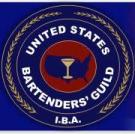 Southern Wine and Spirits, which may be the largest alcohol distribution and marketing company in America. At first, the USBG was an independent guild that slowly branched out, but at some point ‘Southern’ moved themselves to the helm of this organization, and for good and ill, it’s now the 500 pound gorilla of the spirits industry. The ‘Southernization’ of the USBG is in itself a very interesting discussion. In and of itself, having Southern leading the USBG is not necessarily a bad situation, but the argument has been made that there is an intrinsic conflict of interests by having Southern direct the operations of “an organization of beverage service professionals dedicated to the continued refinement of our craft.” [Note: Since writing this post, I have had conversations with a number of friends that are part of the USBG, and while there has been some that are concerned about the Southern Wine & Spirits aspect of their guild, others also voiced their support of Southern’s effect on their local guild, mentioning that they have not ever been seriously or negatively influenced by having the distribution company so closely involved. In fact, some found their contribution to be a positive element to their start-up, existence and ongoing operations.]
Southern Wine and Spirits, which may be the largest alcohol distribution and marketing company in America. At first, the USBG was an independent guild that slowly branched out, but at some point ‘Southern’ moved themselves to the helm of this organization, and for good and ill, it’s now the 500 pound gorilla of the spirits industry. The ‘Southernization’ of the USBG is in itself a very interesting discussion. In and of itself, having Southern leading the USBG is not necessarily a bad situation, but the argument has been made that there is an intrinsic conflict of interests by having Southern direct the operations of “an organization of beverage service professionals dedicated to the continued refinement of our craft.” [Note: Since writing this post, I have had conversations with a number of friends that are part of the USBG, and while there has been some that are concerned about the Southern Wine & Spirits aspect of their guild, others also voiced their support of Southern’s effect on their local guild, mentioning that they have not ever been seriously or negatively influenced by having the distribution company so closely involved. In fact, some found their contribution to be a positive element to their start-up, existence and ongoing operations.]
International: There are a number of international guilds, the most  notable the International Bartenders Association (IBA), with a very interesting history. There had been professional bartender guilds as the word truly represents in Europe for a long time, but in ’51, they got together to form the IBA, still running strong these 58 years later. In communications with Derrick Lee, the current president of the IBA, he remarked, “The IBA is the ‘Leader in Professional Bartending’. Our purpose is guided by this and our objectives. Our missions are to upgrade skills and standards of the bartenders globally, strengthen guilds and engage younger bartenders to join our society, as they are our future.”
notable the International Bartenders Association (IBA), with a very interesting history. There had been professional bartender guilds as the word truly represents in Europe for a long time, but in ’51, they got together to form the IBA, still running strong these 58 years later. In communications with Derrick Lee, the current president of the IBA, he remarked, “The IBA is the ‘Leader in Professional Bartending’. Our purpose is guided by this and our objectives. Our missions are to upgrade skills and standards of the bartenders globally, strengthen guilds and engage younger bartenders to join our society, as they are our future.”
Back here in the ‘States, bartenders will always thrive in a climate warmed by a bartender guild, “There has been an amazing growth in the Cocktail Culture here in Denver over the past year and I’d like to think that the guild has been key in that development.”, says Sean Kenyon,  Secretary of Spirits of the Colorado Bartender Guild (COBG), whom I met while we were taking the B.A.R. course in NYC [Beverage Alcohol Resource (BAR) Course ‘09]. He continues, “We have created a network for bartenders to email or call if they have questions on products, equipment, or methodology. We are more connected than ever before.” Hitting really on what I believe to be the most important part of having a guild, the COBG works to improve the expectation of what constitutes a good cocktail and experience in Colorado. This is a sentiment shared by Bryan Dayton, the president of the guild, “I feel that the guild helps CO in the fact that there has become a greater awareness of better cocktails through the guild and it [helps] educate all of us to be better bar people…”
Secretary of Spirits of the Colorado Bartender Guild (COBG), whom I met while we were taking the B.A.R. course in NYC [Beverage Alcohol Resource (BAR) Course ‘09]. He continues, “We have created a network for bartenders to email or call if they have questions on products, equipment, or methodology. We are more connected than ever before.” Hitting really on what I believe to be the most important part of having a guild, the COBG works to improve the expectation of what constitutes a good cocktail and experience in Colorado. This is a sentiment shared by Bryan Dayton, the president of the guild, “I feel that the guild helps CO in the fact that there has become a greater awareness of better cocktails through the guild and it [helps] educate all of us to be better bar people…”
Probably the largest contribution that a guild can make is to actually CHANGE the direction and expectation for what constitutes a good cocktails, “The cocktail culture has been growing in CO the past couple of years. I think this has coincided with the Guild.”, says Bryan, and I would agree with that. Here in Seattle, what started a few years ago as a few really great bartenders has grown into a whole industry of bartenders and bars that care for their product and the whole experience, including how we make our cocktails, “Also, we strongly believe that the rising tide lifts all of the boats, so we have worked very hard to spread the gospel; fresh juices, good ice, quality spirits, bitters etc.”, said Sean. The same could be said of the Kentucky Bartender’s  Guild, where I found a core group of fantastic bartenders who found no substitution for great products and fresh ingredients which I happily discovered on my trip to Kentucky [‘Whiskey Homeland’]. Nowhere is has this trend been more noticeable in my experience than in Oregon. For such a relatively small town, Portland, Oregon has some of the best bars in America, most of not all of their bartenders being members of their OBG. OBG founder and past executive member, Daniel Shoemaker and his great bar, Teardrop Lounge is a perfect example. [Return here for updated post and quote from Daniel]
Guild, where I found a core group of fantastic bartenders who found no substitution for great products and fresh ingredients which I happily discovered on my trip to Kentucky [‘Whiskey Homeland’]. Nowhere is has this trend been more noticeable in my experience than in Oregon. For such a relatively small town, Portland, Oregon has some of the best bars in America, most of not all of their bartenders being members of their OBG. OBG founder and past executive member, Daniel Shoemaker and his great bar, Teardrop Lounge is a perfect example. [Return here for updated post and quote from Daniel]
Back to the IBA, Mr. Lee sees the IBA and their different associated bartender guilds as working “in tandem” and furthering the craft of bartending, “Spirits industry use the bartenders as an avenue to market their products by recommending and pouring to patrons. Being associate with the Leader is synonymous to being a leader too.” He has a great point – since guilds work to promote the industry, one part of this image is how a guild can promote individual spirits and products. Why drink Big Global Brand A when Local Brand B may be an all-around better product? “The WSBG, and its members, have been a great resource in helping bring Voyager [gin] and Pacifique [absinthe] to the forefront of the local bar scene.”, says Pacific Distillery’s Marc Bernard, “I believe that bartender guilds and spirits producers can work together for the benefit of spirits consuming public.” Here in Seattle, our guild has worked with Maker’s, Bacardi, Buffalo Trace/Sazerac & Co., Appleton’s, Laird’s, St. Germain, Martin Miller’s, Plymouth, Dewar’s, Pacific Distillery, Marteau Absinthe, Del Marguey, Jim Beam, Domaine de Canton, 42 Below… The list goes on and on and on. Only through the interest from our members to learn from these spirits producers have we become more than ‘just’ bartenders. We’re educated. We’re better for it, and we can thank our Guild and our membership, a point for which Kent Fleischmann from Dry Fly Distillery agrees, “Unless we, the craft distiller can further educate anyone in this industry, on the merits of what and why we do what we do be it the independent bartender or a guild, the day just goes on and we all do business as we will.” And, not having someone or an organization to assist and teach you, “business as we will” may just mean colorful liqueurs with approximated flavors…
In the end, the real strength and value of a bartender guild is simply the cumulative affect of how the combined works of a number of interested parties will often improve the results compared to the efforts of an individual. In the future, I believe that the success of any city’s bar culture will be directly representational to the success of their bartender guild. Great minds think alike, and together, great minds will become even greater and their efforts more worthy.
Thanks to those that helped us, and we look forward to helping others in the future.
OK. But, how does one START a guild!?

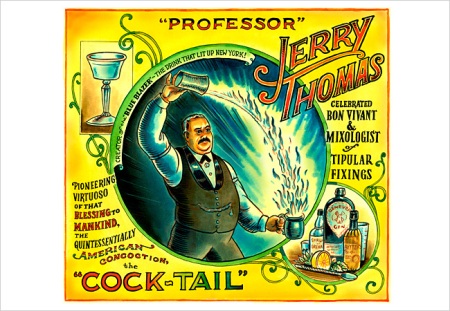


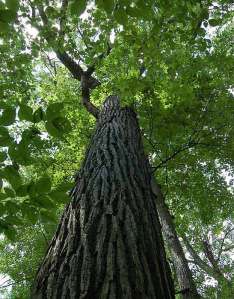





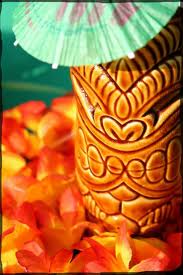
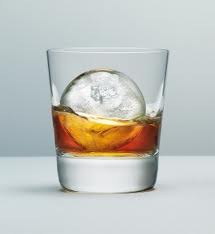




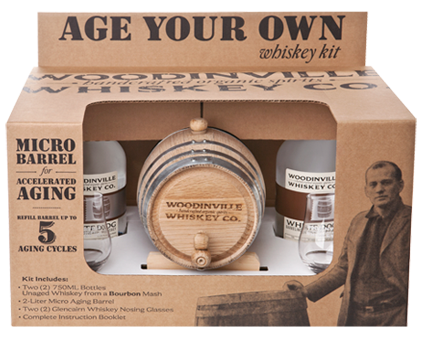
 Single Barrel coming out
Single Barrel coming out
 With the help of Woodinville Whisky Co. and their easy access to inexpensive and plentiful barrels, we are offering the opportunity for our customers to age their own cocktails, and each customer gets to pick what cocktail they’ll be aging, and into the barrel it goes and a month to two later? Voilà! One aged cocktail, please!
With the help of Woodinville Whisky Co. and their easy access to inexpensive and plentiful barrels, we are offering the opportunity for our customers to age their own cocktails, and each customer gets to pick what cocktail they’ll be aging, and into the barrel it goes and a month to two later? Voilà! One aged cocktail, please!
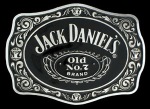












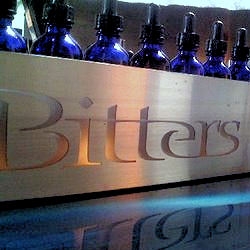



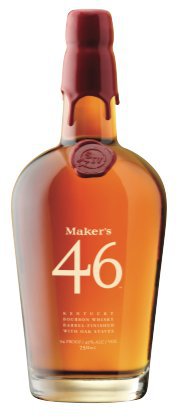







 notable the International Bartenders Association (
notable the International Bartenders Association (

 Think back throughout all of your life to the bartenders that you’ve known… Hell, do you remember the first bartender that served you? I do – I remember when I was…17 maybe? Back then in those days of TVs with knobs that went from 1 – 12, front doors that never locked and a minimum age of 19, everyone knew the bars in their cities that served us young’ns. I used my cousin’s ID and pretended that the doorguy and myself were not in this dance together. He’d look at the ID and then at me (I must have looked 14), and I said to myself, ‘I sure hope that he believes the ID’…
Think back throughout all of your life to the bartenders that you’ve known… Hell, do you remember the first bartender that served you? I do – I remember when I was…17 maybe? Back then in those days of TVs with knobs that went from 1 – 12, front doors that never locked and a minimum age of 19, everyone knew the bars in their cities that served us young’ns. I used my cousin’s ID and pretended that the doorguy and myself were not in this dance together. He’d look at the ID and then at me (I must have looked 14), and I said to myself, ‘I sure hope that he believes the ID’…

